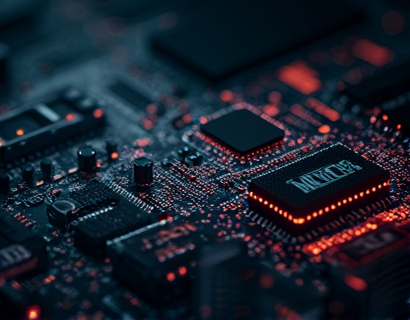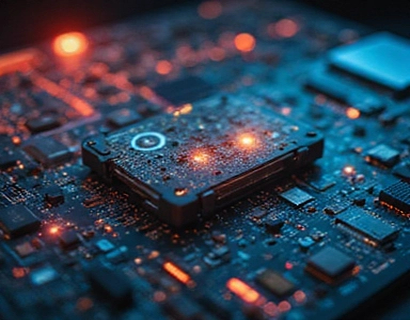Personalized AI-Driven Math Education for Children and Young Learners: Empowering Future STEM Success from Age 5 to 18
In the rapidly evolving landscape of education, the integration of Artificial Intelligence (AI) has opened new avenues for personalized learning experiences. One of the most impactful applications of AI in education is in the realm of mathematics for children and young learners aged 5 to 18. This approach not only transforms traditional learning methods but also plays a crucial role in building a strong foundation for future success in STEM fields. By leveraging AI-driven personalized education, young learners can enjoy interactive problem-solving and engaging resources that cater to their individual needs, thereby enhancing their math skills and fostering a genuine passion for learning.
Understanding Personalized AI-Driven Math Education
Personalized AI-driven math education is a sophisticated method that uses advanced algorithms and machine learning to tailor the learning experience to each student's unique abilities, interests, and learning pace. Unlike conventional classroom settings where a one-size-fits-all approach often prevails, AI-powered education adapts in real-time to the learner's progress. This customization ensures that each child receives the appropriate level of challenge and support, making the learning process more effective and enjoyable.
The core principle behind this approach is to identify and address the specific strengths and weaknesses of each student. By continuously analyzing performance data, the AI system can pinpoint areas where a child may be struggling and adjust the content accordingly. This dynamic adjustment is crucial for maintaining engagement and preventing frustration or boredom, which are common barriers to learning.
Interactive Problem-Solving and Engaging Resources
One of the most significant advantages of AI-driven math education is the incorporation of interactive problem-solving tools and engaging resources. Traditional math textbooks and worksheets often fail to capture the attention of young learners, leading to disinterest and a lack of motivation. In contrast, AI-powered platforms offer a variety of interactive elements such as gamified exercises, virtual manipulatives, and multimedia content that make learning math an exciting adventure.
For instance, interactive simulations allow students to visualize complex concepts like fractions, geometry, and algebra in a tangible way. These visual aids help demystify abstract ideas and make them more accessible. Additionally, gamification elements such as points, badges, and leaderboards introduce a competitive yet collaborative aspect to learning, motivating students to improve their skills and knowledge continuously.
Building Confidence and Fostering a Love for Math
The personalized nature of AI-driven math education significantly contributes to building confidence in young learners. By starting at an appropriate level and gradually increasing the difficulty based on individual progress, students experience consistent success. This positive reinforcement is vital for developing a growth mindset, where challenges are seen as opportunities for growth rather than insurmountable obstacles.
Moreover, the engaging and interactive resources provided by these platforms help foster a genuine love for math. When children find math enjoyable and relevant to their lives, they are more likely to pursue it with enthusiasm. This love for math is not just about achieving good grades; it's about cultivating a mindset that values critical thinking, problem-solving, and logical reasoning—skills that are essential in the STEM fields.
Enhancing Academic Performance and Preparing for STEM Success
The impact of personalized AI-driven math education extends beyond the classroom, significantly enhancing academic performance and preparing students for future success in STEM fields. Research has shown that students who receive personalized education tend to outperform their peers in standardized tests and show greater retention of knowledge. This is because the tailored approach ensures that each student is receiving the most effective instruction for their learning style and pace.
Furthermore, the skills developed through AI-driven math education—such as analytical thinking, persistence, and adaptability—are highly valuable in STEM disciplines. These skills are not only crucial for academic success but also for career readiness in an increasingly technology-driven world. By starting early with personalized math education, children lay a strong foundation that supports their continued growth and exploration in STEM areas.
Addressing Common Challenges in Math Education
Traditional math education often faces challenges such as one-size-fits-all teaching methods, lack of individual attention, and insufficient resources. AI-driven personalized education addresses these issues head-on. The adaptive nature of AI ensures that each student receives the right level of challenge and support, reducing the risk of falling behind or becoming bored. Additionally, the wealth of data generated by these platforms allows educators to identify trends and patterns, enabling them to provide targeted interventions and support where needed.
Another significant challenge is the variability in learning styles and paces among students. AI-driven education seamlessly accommodates this diversity by offering multiple pathways to master a concept. Whether a child is a visual learner, an auditory learner, or prefers hands-on activities, the platform can adapt to meet their needs, ensuring that no student is left behind.
Parental Involvement and Support
Parental involvement plays a crucial role in a child's educational journey, and AI-driven math education provides tools to enhance this involvement. Parents can access detailed reports and insights into their child's progress, understanding where they excel and where they need additional support. This transparency empowers parents to engage more effectively in their child's learning process, providing encouragement and guidance at home.
Moreover, many AI-powered platforms offer resources and tips for parents to support their children's math learning at home. This can include interactive activities, educational games, and strategies for reinforcing concepts learned in school. By bridging the gap between school and home, these tools create a cohesive and supportive learning environment.
Future Prospects and Innovations
The future of AI-driven math education is promising, with ongoing advancements set to further enhance the learning experience. One area of innovation is the integration of natural language processing (NLP) to create more conversational and intuitive interfaces. This could allow students to interact with the platform using natural language, making the learning process even more seamless and user-friendly.
Another exciting development is the use of augmented reality (AR) and virtual reality (VR) to create immersive learning environments. These technologies can transport students into virtual math worlds where they can explore complex concepts in a three-dimensional space, making learning not only more engaging but also more memorable.
Additionally, the incorporation of social learning features could enable students to collaborate on problems and projects, fostering a sense of community and peer support. This social aspect can be particularly beneficial for developing teamwork and communication skills, which are essential in STEM careers.
Conclusion
Personalized AI-driven math education represents a transformative shift in how we approach learning mathematics for children and young learners. By providing tailored, interactive, and engaging experiences, these platforms not only improve academic performance but also build a strong foundation for future success in STEM fields. As technology continues to evolve, the potential for even more innovative and effective educational tools is vast, ensuring that the next generation is well-equipped to tackle the challenges of a rapidly changing world.










































